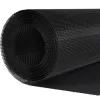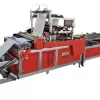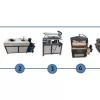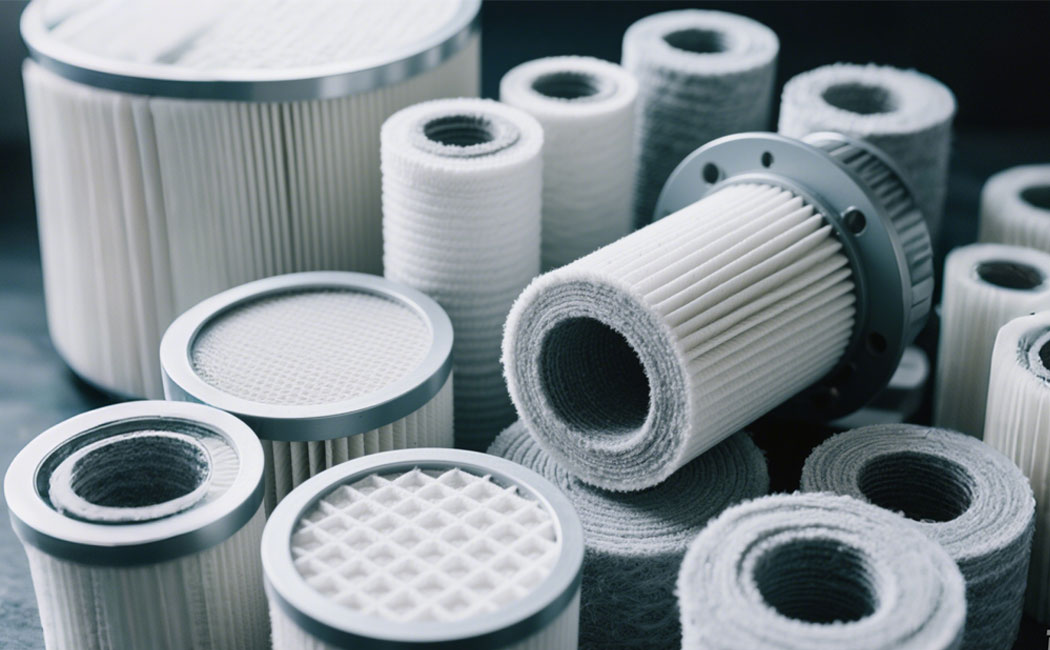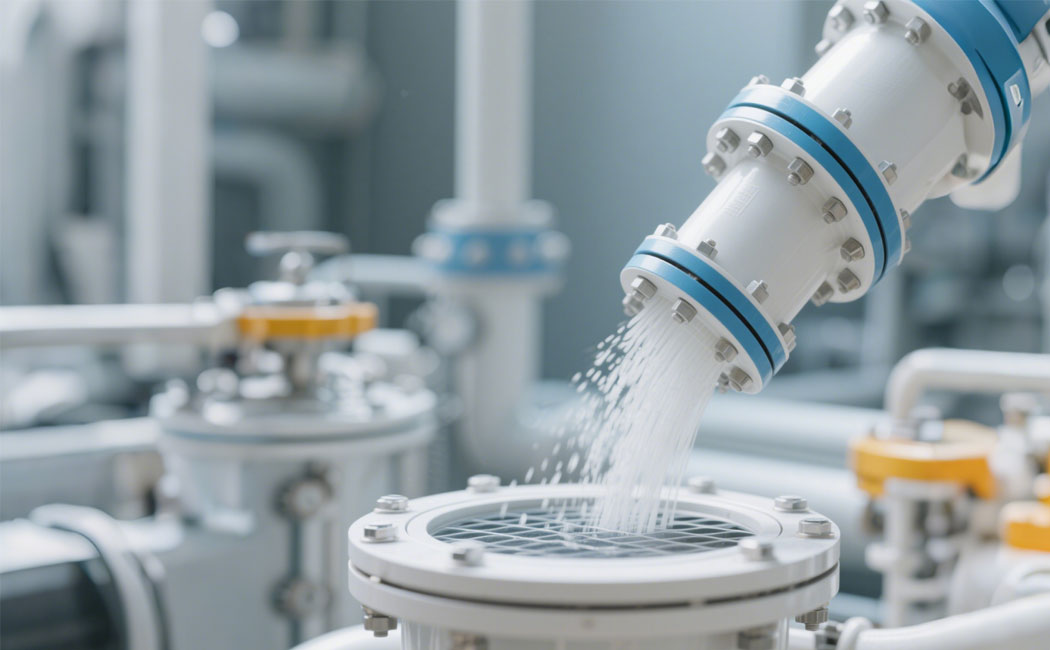Pneumatic spot welding machine: outstanding engineering design produced in auto filter
Foreword
In the manufacture of automotive diesel engine, a welding solution combining speed, precision and reliability is needed to fix the threaded filter cover to mounting plates. Pneumatic Spot Welding Machines achieve this through compressedair actuation and controlled resistance heating. This guide discusses the technical basis of the 100 KVA industrial model, its advantages over alternative systems and the revolutionary applications of filter assembly lines.
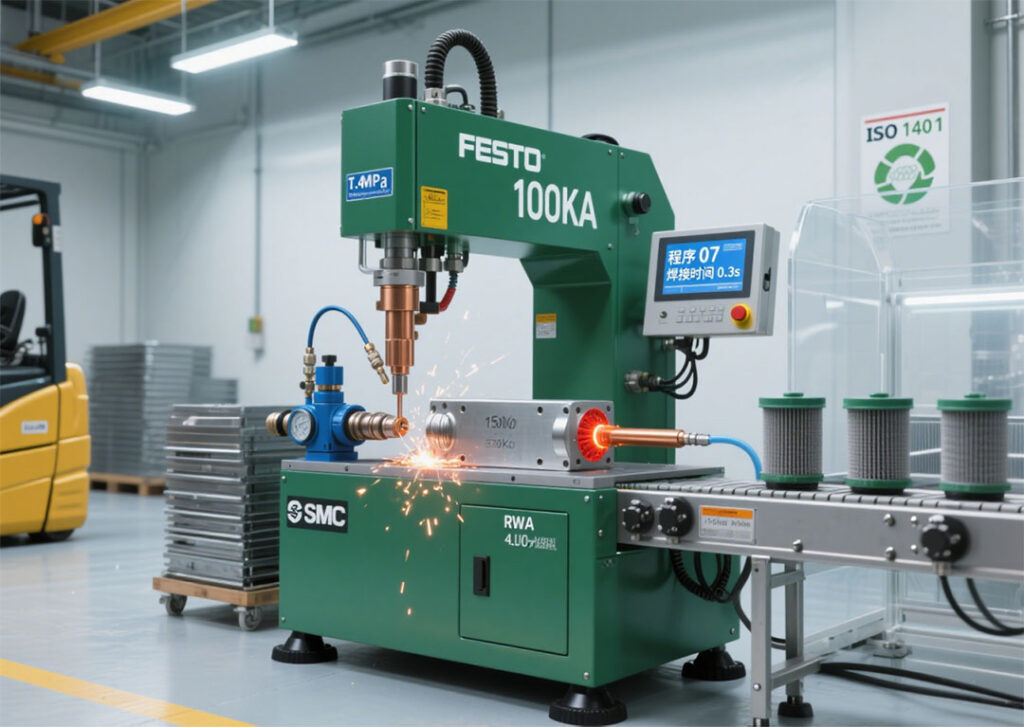
Core operating Principle
Pneumatic spot welding utilizes Joule’s Law of Electrical Resistance:
1. clamping stage (0.51.5 seconds):
0.4 mPa compressed air drives the double cylinders, and 6001200 kg force is exerted through copper electrodes.This eliminates interfacial gaps and ensures the uniform current distribution.
2. welding stage (0.1 to 0.5 seconds):
A 100 KVA transformer can supply 12,000 amps of current to the workpiece at 58 volts.Contact resistance will generate heat of 15001800°c, which will melt the local nugget.
3. Forging stage (0.3 second to 1.0 second):
Continuous pressure compresses the melting zone, eliminating pores in the solidification process.
4. Release (≤ 0.5 seconds):
Electrodes is pneumatically contracted to complete the cycles within 23 seconds.
Machinery design and manufacturing standards
The structure of 700 kg (1070 × 520 × 1800 mm) is combined:
· heavyDuty Frame:12 mm thick ASTM A 36 steel plates can bear the dynamic load of 20 kn. Vibrationdampening mounts absorb electromagnetic shock during 100 KVA operations.
· precision pneumatic technology:ISO6431 certified steel cylinder with SMC pressure regulators keeps 0.4 MPa 3%. Triplestage air filters (40/20/5 am) prevent seal degradation.
· electrical System:Oilimmersed transformer with laminated copper secondary circuit (50% duty cycle) can minimize impedance losses.
· intelligent Control:The PLCbased sequencer programs 16 welding formulas with a time resolution of 0.01 second. Realtime monitoring and detection of current fluctuations is more than 5%.
· assembly of electrode:Watercooled rwmaclass electrodes (4 liters/minute flow rate) can maintain 5000+ welding at 1500℃. The design of quick change chuck reduces the installation time.
Technical advantages over competing systems.
In key aspects, the pneumatic systems is superior to the hydraulic and servoelectric systems:
· Efficiency of speed:The cycles of 23 seconds exceeds that of hydraulic welding machine (46 seconds) and competitor’s servo models (35 seconds), which increases the output of filter by 30%.
· The stability of the force:Air pressure adjustment can ensure the force consistency of 2% in 100,000+cycles, which is very important for uniform nugget diameter in 1.5mm steel plates.
· Economic operation:The maintenance cost is USD 200/year (filter/seal), which is 75% lower than that of hydraulic systems (USD 800/year for pump/fluid) and 85% lower than that of servo electric system (USD 1,500/year for driver maintenance).
· Environmental safety:Compressed air operation eliminates the risk of hydraulic oil pollution and meets the ISO 14001 cleaner production standards.
· Energy Consumption:The power consumption of 0.5 kW compressor load is 60% less than that of hydraulic pumps (2.5 kW) and 72% less than that of servo motors (1.8 kW).
Technical specification (automotive filter model
Power Input: 380 V AC 3phase 50/60 Hz
Rated capacity: 100 KVA (secondary current: 12 kiloamperes maximum)
Air Supply: 0.4 MPa 5% (flow rate: 120 liters/minute)
Electrode Force: 600–1,200 kgf (Programmable per weld
Throat Depth: 400 mm (Optimized for filter housings
Protection level: IP 54 (coolant/oil mist resistance
Weight: 700kg (5%)
Warranty: 12 months (excluding consumables)
Industrial Applications program
Main Application: automotive diesel filters.
The threaded cover plates is accurately welded to mounting plates in oil/fuel filters.
· leakproof joints under 35 bar pressure.
· zero heat deformation of thin stainless steel.
· 7second cycle time per filter (vs. It’s 22 seconds for MIG
Implementation of extension:
1. The transport industry:
spot welding of battery tray (made by electric vehicle.
accessories for exhaust gas sensor bracket.
2. The industrial equipment:
hydraulic valve body assemblies.
compressor shell joint (13mm carbon steel.
3.energy Infrastructure
solar panel framing joints.
transformer Core Lamination
Case study: Quality change in filter production.
A Tier1 supplier in Hebei, China implemented pneumatic welders for fuel filter lines.
challenge: Due to porosity and dislocation, manual welding leads to a rejection rate of 15%.
Solution: Automated pneumatic components with precise electrode alignment.
The results:
▶ Defect rate reduction to 2%
▶ Throughput increase from 163 to 420 units/hour
▶ ROI achieved in 14 months via labor/energy savings
Operating criterion
maintenance scheme:
Daily: Empty the air filters and check the electrode arrangement.
Weekly: verify the calibration of force and torque structural bolts.
Once a month: replace the electrode tip and test safety circuits.
Compatibility of material:
Most suitable for: low carbon steel, stainless steel (≤ 3mm.
Avoid: the risk of zinc pollution of galvanized steel.
safety system:
Twohand control, light curtains and overload cutoff are in line with ANSI/RIA R 15.06 standard.
Conclusion
The 100 kVA pneumatic spot welding machine has set a new benchmarks made in auto filter. By combining the pneumatic precision of 0.4 Mpa with the powerful 380 v electrical systems, it provides three core advantages: shortperiod mass production, nonhole welding for key sealing applications, and lowest operating costs. With the development of diesel engine standards, this technology is still indispensable for the manufacture of zerodefect parts
Share:
Categories
- blog(31)
- Industry news(3)
- Technique articles(28)

